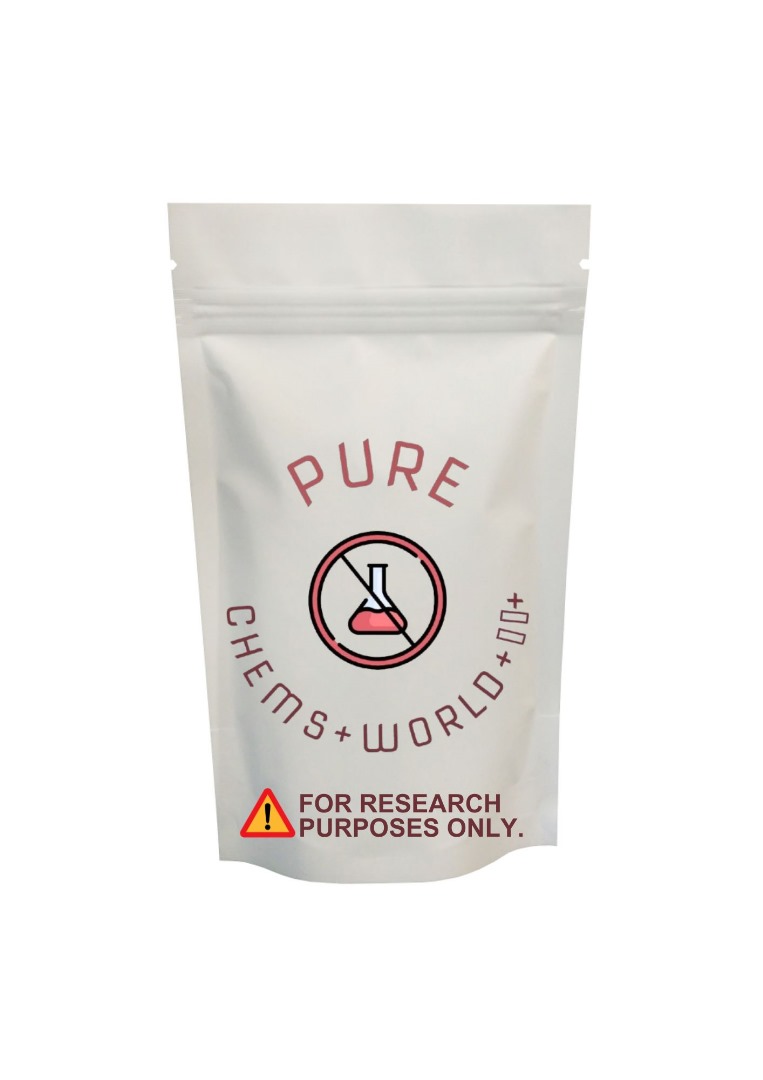Buy 3D-MXE Online
Buy 3D-MXE (3-Deoxo-Methoxetamine) is a research-grade dissociative compound belonging to the arylcyclohexylamine class, closely related to methoxetamine (MXE) and ketamine. 3D-MXE is an NMDA (N-methyl-D-aspartate) receptor antagonist, making it a valuable tool for studying dissociative effects, glutamatergic inhibition, neuroplasticity, and altered states of perception. 3D-MXE is utilized by researchers to explore its influence on cognitive processing, sensory experiences, and the complex mechanisms of NMDA receptor modulation.
At Pure Chems World, our 3D-MXE is synthesized with the utmost precision, ensuring the highest purity and consistency for reliable laboratory research. This compound is ideal for researchers investigating the pharmacological properties of dissociatives, their effects on neurochemical pathways, and their potential impact on cognition and sensory perception.
Chemical Structure and Properties
- IUPAC Name: 2-(Ethylamino)-2-(3-methoxyphenyl)cyclohexanone
- Molecular Formula: C15H21NO2
- Molecular Weight: 247.33 g/mol
3D-MXE is structurally similar to methoxetamine but features modifications that may lead to unique dissociative properties and receptor interactions. Researchers use 3D-MXE to investigate its binding affinity for NMDA receptors, its ability to modulate glutamate signaling, and the physiological effects of dissociative experiences on the central nervous system.
Order 3D-MXE
3D-MXE is supplied in a crystalline powder form and can be dissolved in appropriate solvents for both in vitro and in vivo research. Its stability and solubility make it ideal for experiments involving receptor binding assays, neurotransmitter release studies, and behavioral experiments. Researchers should adhere to standard safety protocols and precise dosing guidelines to ensure consistent and reliable experimental results when working with 3D-MXE.
Potential Applications of 3D-MXE
- NMDA Receptor Antagonism Studies: 3D-MXE is a potent NMDA receptor antagonist, inhibiting excitatory glutamate activity in the brain. Researchers use 3D-MXE to investigate the effects of NMDA receptor inhibition on synaptic plasticity, neuroplasticity, and overall brain activity. These studies provide crucial insights into the role of NMDA receptors in regulating cognition and excitatory neurotransmission.
- Dissociative and Sensory Processing Research: 3D-MXE is valuable for studying dissociation, including changes in sensory processing, perception, and cognitive function. Researchers utilize 3D-MXE to understand how NMDA receptor antagonism influences altered states of perception, detachment, and sensory integration, making it a useful tool for exploring the neural basis of dissociative experiences.
- Neuroplasticity and Cognitive Studies: 3D-MXE also has potential applications in research focusing on the effects of NMDA receptor antagonists on neuroplasticity and cognitive flexibility. Researchers use 3D-MXE to explore how inhibition of NMDA receptors impacts neural adaptability and cognitive functions, providing insights into therapeutic possibilities for treating conditions related to cognitive rigidity.
Safety and Handling
3D-MXE is a potent dissociative agent, and researchers must handle it with care in a controlled environment:
- Dissociative Properties: 3D-MXE exerts significant effects on the central nervous system by inhibiting NMDA receptor activity, resulting in dissociative effects, altered perception, and cognitive changes. Researchers must use caution when handling this compound to prevent accidental exposure or misuse.
- Handling Precautions: Use personal protective equipment (PPE), including gloves, lab coats, and safety goggles, when handling 3D-MXE. Experiments should be conducted in well-ventilated areas or under a fume hood to prevent accidental inhalation or skin contact. In case of accidental exposure, researchers should immediately follow institutional safety procedures.












Reviews
There are no reviews yet.